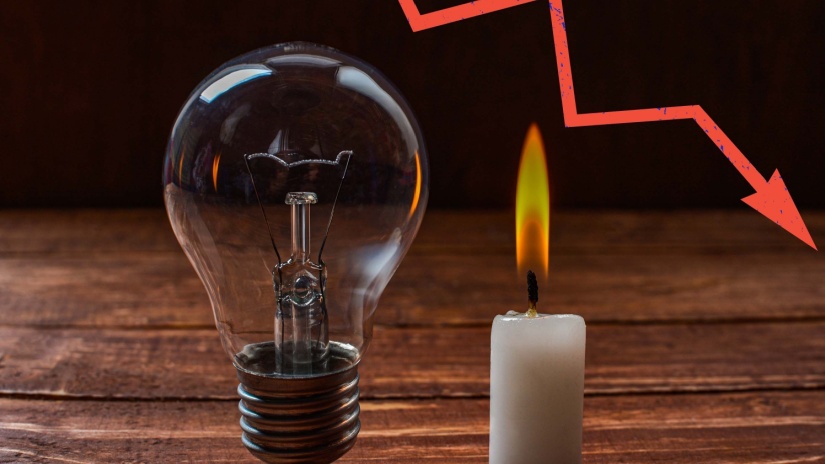Understanding Australia's energy crisis: What it means for you

Australia has long been proud of its abundant natural resources and relatively stable energy market. But in recent years, the country has faced a growing energy crisis - one that’s affecting power prices, grid reliability, and the transition to renewable energy.
For many Aussie households and businesses, rising electricity bills and uncertainty about the future of power supply are now top of mind.
So, what’s behind the energy crisis in Australia, and what can you do about it? Let’s break it down.
What is the energy crisis in Australia?
The term “energy crisis” might sound dramatic, but it accurately reflects what’s been happening across the country. The energy crisis refers to a mix of rising electricity prices, pressure on power supply, and instability in the grid - all of which have been building for years but reached a breaking point around 2022.
It’s not just about a lack of energy - it’s about the way electricity is generated, distributed, and priced. Australia is in the middle of a major transformation as we move away from fossil fuels and toward clean energy like solar and wind.
But the shift hasn't been smooth. The grid is still catching up, and so are the rules and systems that govern energy markets.
Global fuel prices and their impact
One of the most immediate triggers of the crisis came from outside our borders. The war in Ukraine caused global energy markets to spiral. Russia, a major exporter of coal and gas, cut off supply to several countries. This disruption pushed global prices for fossil fuels to record highs.
Even though Australia exports both coal and gas, most of that is shipped overseas, especially from the east coast. Since there are limited rules to reserve gas for domestic use, Australians were suddenly competing with international buyers.
The result? Local gas prices soared, and because gas is often used during peak electricity demand, that pushed power prices higher too.
A power grid running on old infrastructure
Another big piece of the puzzle is Australia’s ageing fleet of coal-fired power stations. These facilities were built decades ago, and many are now breaking down more often. Unplanned outages mean less electricity on the market, which drives up prices even further.
On top of that, several coal power stations have already closed or announced closure dates. While this is an important part of transitioning to renewable energy, the replacement systems - like battery storage and grid upgrades - haven’t been built quickly enough. That gap in supply makes the grid more fragile and less reliable.
Renewable energy is growing - but slowly
Australia has seen a massive boom in solar and wind energy over the past decade, especially rooftop solar on homes. But there’s a catch. Solar panels only generate power during the day, and wind farms depend on — you guessed it - the wind.
Without enough battery storage or “dispatchable” renewable energy sources to cover demand when the sun isn’t shining, the grid becomes unstable. Large-scale batteries and pumped hydro are being developed, but not fast enough to meet growing demand and offset coal closures.
Add to that the long delays in building new transmission lines to connect renewable projects in remote areas to cities, and you’ve got a bottleneck that’s slowing progress.
How poor regulation of the gas market made things worse
Gas plays a key role in balancing the electricity grid. But Australia’s east coast gas market is largely deregulated, which means there are no guarantees of affordable supply for domestic use.
While international companies profit from exports, Aussie consumers are hit with high prices. In 2022, the situation became so dire that some energy retailers warned customers their bills could double - or even told them to switch to another provider if they couldn’t afford the new rates.
This lack of oversight in the gas market left everyday Australians exposed to global price shocks, even though the gas is being produced right here at home.
What this means for Aussie households and businesses
The energy crisis has had some real-world consequences that many people have already felt. Electricity prices have gone up sharply, especially on the east coast. Businesses with high energy usage - like manufacturing and hospitality - have seen their operating costs climb. Some have had to cut hours or increase prices to stay afloat.
For everyday Australians, this has meant higher power bills, reduced plan options, and less choice in the market. Some smaller energy companies have exited entirely, leaving customers scrambling to find new providers.
It’s also shaken confidence in the energy system. People want to know their power will stay on - and that it won’t cost a fortune.
How is the government responding?
The federal and state governments have stepped in to try and stabilise the situation. In late 2022, the government imposed temporary price caps on domestic coal and gas to prevent further price spikes.
They also launched the Energy Price Relief Plan, which includes direct subsidies for eligible households and small businesses to ease energy bill stress.
In the longer term, a national effort is underway to modernise the energy system:
Rewiring the nation
This $20 billion program aims to overhaul the power grid by building new transmission lines that can carry renewable energy from remote locations (like wind farms in regional NSW or solar farms in Queensland) to urban centres where it’s needed most.
Investment in batteries and storage
New large-scale batteries, like the Victorian Big Battery, are being built to store renewable energy and provide backup during peak demand or outages. This will help smooth out the bumps in supply from solar and wind.
Capacity mechanism
The government is working on a system to reward energy providers for having extra power ready to go - not just when it’s used, but when it’s needed. This ensures there’s always enough supply during heatwaves or unexpected outages.
What can Aussies do right now?
With the crisis still unfolding, more and more Australians are looking for ways to protect themselves from rising energy costs - and for many, the answer lies in solar power.
By installing rooftop solar panels and batteries, households can generate their own electricity, store it, and use it when grid prices are highest. This can dramatically reduce power bills and offer more energy independence.
On top of that, switching to a solar-friendly energy plan ensures you get the best feed-in tariff for any excess power you export back to the grid.
Benefits of switching to solar power
There’s never been a better time to go solar. Whether you’re installing panels for the first time or upgrading your system with a battery, the benefits are hard to ignore:
- Save money: Solar panels can significantly reduce or eliminate your electricity bills, especially when paired with a battery.
- Cleaner energy: Solar power is renewable, meaning it doesn’t pollute the air or contribute to climate change.
- Energy independence: Producing your own power gives you more control and less reliance on the grid.
- Protection from price hikes: With solar, you're less vulnerable to future energy market shocks.
- Government support: Many states offer rebates, feed-in tariffs, or interest-free loans to help with installation costs.
Which providers offer solar energy plans in Australia?
Several energy retailers in Australia offer plans specifically designed for solar customers. These include higher feed-in tariffs, flexible rates, or bundled battery options:
- Origin Energy – Offers full solar system installations, monitoring, and one of the better feed-in tariffs on the market.
- AGL – Known for solar battery bundles and incentives for solar export.
- EnergyAustralia – Provides home solar and battery systems with competitive solar plans.
- Tango Energy – A popular option in Victoria for budget solar plans.
- Red Energy – 100% Aussie-owned and solar-compatible, with transparent pricing.
- Powershop – Sustainability-focused and ideal for solar households looking to track their usage digitally.
- Dodo – Offers solar feed-in tariffs across multiple states, often at very competitive rates.
Ready to beat the energy crisis?
You don’t have to wait for the government or the market to sort things out. You can take charge of your energy future right now by switching to a better plan - or going solar.
Call Compare Energy on 1300 790 106 and speak with one of our friendly Aussie energy experts. We’ll help you compare Australia’s top energy providers, find the best solar plans, and even walk you through battery options - all at no cost to you.
The power to save is in your hands. Let’s get started today.

